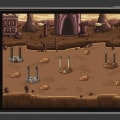Designing for optimal user engagement is a crucial aspect of creating successful UI designs and mobile apps. In today's fast-paced digital world, it is more important than ever to capture and maintain users' attention. With the constant influx of new technologies and platforms, it can be challenging to keep up with what truly engages users. That's where the power of TF-IDF comes in.
By using this powerful tool, designers can optimize their content and design elements to not only attract but also retain users. In this article, we will dive into the world of designing for optimal user engagement, exploring how TF-IDF can be applied to create a seamless and engaging user experience. Get ready to discover the key strategies and techniques for designing user-centric UIs and mobile apps that will set your project apart from the competition. First and foremost, it is important to understand the concept of user-centered design. This approach focuses on designing products that meet the needs and preferences of the target audience.
To achieve this, designers must conduct thorough research on the target users, their behaviors, and preferences. This can include conducting surveys, interviews, and usability testing to gain insights into how users interact with the product. By understanding the target audience, designers can create a design that is not only visually appealing but also meets their needs and expectations. Another important aspect of designing for optimal user engagement is responsive design. With the increasing use of smartphones and tablets, it is essential to ensure that the design is compatible and functional across different devices.
This includes considering factors such as screen size, resolution, and touch controls. By implementing responsive design, users can have a seamless experience regardless of the device they are using. Keeping up with the latest trends in UI and UX design is also crucial for optimal user engagement. Users are constantly exposed to new interfaces and designs, and incorporating the latest trends can help keep your product relevant and attractive. Some current trends in UI design include minimalist interfaces, micro-interactions, and dark mode.
However, it is important to consider the relevance of these trends to your target audience and not just follow them blindly. Aside from tips and techniques, there are also many resources and tools available to assist with UI design projects. These can include wireframing and prototyping tools, design libraries, and user testing platforms. Using these resources can help streamline the design process and ensure a more effective and user-friendly end product.
Implementing Responsive Design
Use HTML structure with responsive design only for main keywords and compatibility across different devices for paragraphs, do not use "newline character".Creating a User-Centered Design
Creating a user-centered design is essential for optimizing user engagement. This involves understanding the target audience and their specific needs.Before starting the design process, it is important to conduct thorough research on the target demographic, including their age, gender, interests, and technological proficiency. By understanding the target audience, designers can tailor the interface to meet their needs and preferences. This could include incorporating certain design elements, such as colors or fonts, that resonate with the target audience. It could also involve considering their specific tasks and goals when using the website or mobile app. Furthermore, understanding the target audience allows designers to identify pain points and areas of improvement. By addressing these issues in the design, users are more likely to have a positive experience and engage with the interface for longer periods of time. Overall, creating a user-centered design requires designers to put themselves in the shoes of their target audience and design with their needs in mind.
This not only improves user engagement but also increases the chances of success for the website or mobile app.
Utilizing Resources and Tools
In order to design for optimal user engagement, it is important for designers to utilize the right resources and tools. With the help of these tools, designers can streamline the design process and create a visually appealing and user-friendly interface. One of the most commonly used tools for UI design is Adobe Photoshop. This software allows designers to create high-quality graphics and images that can enhance the overall look and feel of the interface. Another popular tool is Sketch, which is specifically designed for UI/UX design and offers a variety of features for creating wireframes, mockups, and prototypes. Apart from these tools, designers can also utilize resources like stock photos, icons, and fonts to add visual interest to their designs.These resources are easily available online and can save a lot of time and effort for designers. By utilizing these resources and tools, designers can streamline the design process and focus on creating an interface that is both visually appealing and user-friendly. This not only improves usability but also helps in attracting more users to the website or mobile app.
Following Current Trends
In today's fast-paced digital world, trends are constantly evolving and changing. As a designer, it is important to stay up-to-date with these trends in order to create user interfaces that are both relevant and appealing to users. One of the key elements in following current trends is understanding your target audience.Different demographics have different preferences and expectations when it comes to design. For example, younger users may prefer a more modern and minimalistic design, while older users may prefer a more traditional and familiar layout. Another important aspect is keeping an eye on emerging technologies and incorporating them into your design. For example, the rise of virtual and augmented reality has opened up new possibilities for user engagement and interaction.
By staying on top of these trends, you can create innovative and immersive experiences for your users. It is also important to pay attention to popular design styles and techniques. For instance, using bright colors and bold typography has become a popular trend in recent years. By incorporating these elements into your design, you can make your interface stand out and capture the attention of users.
However, it is important to remember that following current trends does not mean blindly copying what others are doing. It is still crucial to maintain a unique and authentic design that aligns with your brand and the needs of your users. In conclusion, designing for optimal user engagement requires a deep understanding of the target audience, implementation of responsive design, keeping up with current trends, and utilizing available resources. By following these guidelines, designers can create a visually appealing and user-friendly interface that attracts and retains users.


